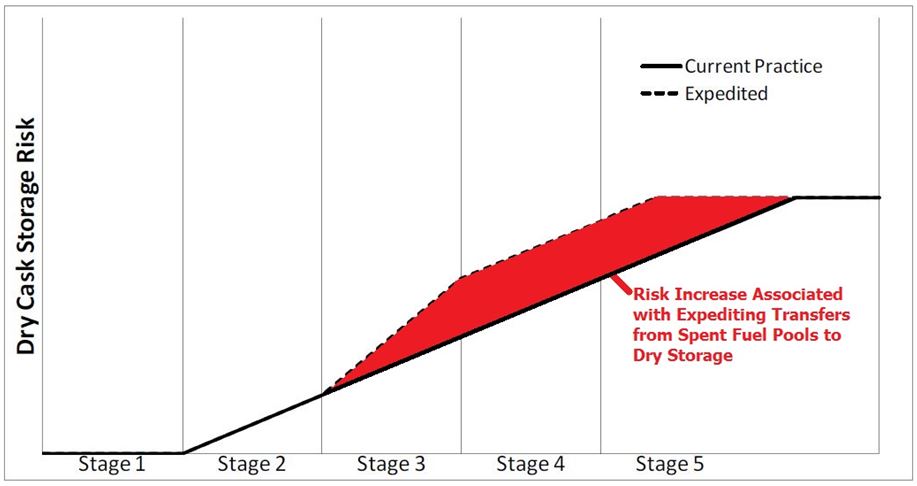In late June 2013, the Nuclear Regulatory Commission released a draft of its long-awaited study on spent fuel storage methods.
We thought the NRC’s study would answer the question of whether it is safer to store irradiated fuel in spent fuel pools or in dry storage at nuclear plant sites. This question arose after 9/11 for security reasons and resurfaced after Fukushima for safety reasons. The question is simple:
Are the risks from irradiated fuel better managed (i.e., lower) when it is in spent fuel pools or in dry storage?
The answer to this question of relative safety is important. Due to the federal government’s failure to fulfill its obligation to the American public and plant owners by disposing of irradiated fuel, this material has accumulated at plant sites across the country. At operating nuclear plants, the irradiated fuel fills spent fuel pools until near capacity and then overflows into dry storage. Would accelerating the transfer of irradiated fuel from spent fuel pools to dry storage reduce the security and safety hazards? That is precisely what we expected the NRC’s study to explicitly address.
To be sure, Figure 139 from the NRC’s study spoke to this point, but from such a distance and with such vagueness as to be a non-answer.

Fig. 1: Change of risks posed by spent fuel stored in cooling pools under the current practice and in the the case of expedited transfer of spent fuel from the pool into dry cask storage.
Part of Figure 139 (Fig. 1) addressed the relative risk of storing irradiated fuel in spent fuel pools under the current practice and if transfers to dry storage were expedited. UCS colorized the differences to highlight them. The red region indicates where expedited transfers increase risk. The green regions indicate where expedited transfers reduce risk.

Fig. 2: Change in risks posed by spent fuel stored in dry cask storage under the same two scenarios.
Another part of Figure 139 (Fig. 2) addressed the relative risk of storing irradiated fuel in dry storage under the current practice and if transfers to dry storage were expedited. Once again, UCS colorized the difference to highlight it. The red region indicates where expedited transfers increase risk.
But the NRC’s figure and text did not quantify this conceptual portrayal of the risk impacts from expedited transfers–there are no numbers on the vertical axis. In other words, the NRC’s efforts do not allow one to determine if the net risk reductions (green areas) are larger than the net risk increases (red areas) so that such transfers make the public safer.
All the NRC’s study “reveals” is that reducing the inventory of irradiated fuel in spent fuel pools lowers its risk and accumulating irradiated fuel onsite in dry storage at a faster pace increases that risk. Those facts have been known for decades.
Therefore, the NRC’s study serves little purpose by answering questions that haven’t been asked for decades. And the NRC’s study does a real dis-service by ducking the question that has been asked countless times in recent years.
UCS submitted formal comments on the NRC’s draft spent fuel study critiquing this and other aspects of the study. Unless these comments are really and truly addressed, the NRC’s final study will serve no use unless one has a spot on a bookshelf or a place on a coffee table to fill.
